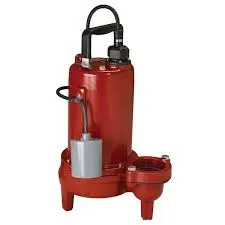English
- Afrikaans
- Albanian
- Amharic
- Arabic
- Armenian
- Azerbaijani
- Basque
- Belarusian
- Bengali
- Bosnian
- Bulgarian
- Catalan
- Cebuano
- Corsican
- Croatian
- Czech
- Danish
- Dutch
- English
- Esperanto
- Estonian
- Finnish
- French
- Frisian
- Galician
- Georgian
- German
- Greek
- Gujarati
- Haitian Creole
- hausa
- hawaiian
- Hebrew
- Hindi
- Miao
- Hungarian
- Icelandic
- igbo
- Indonesian
- irish
- Italian
- Japanese
- Javanese
- Kannada
- kazakh
- Khmer
- Rwandese
- Korean
- Kurdish
- Kyrgyz
- Lao
- Latin
- Latvian
- Lithuanian
- Luxembourgish
- Macedonian
- Malgashi
- Malay
- Malayalam
- Maltese
- Maori
- Marathi
- Mongolian
- Myanmar
- Nepali
- Norwegian
- Norwegian
- Occitan
- Pashto
- Persian
- Polish
- Portuguese
- Punjabi
- Romanian
- Russian
- Samoan
- Scottish Gaelic
- Serbian
- Sesotho
- Shona
- Sindhi
- Sinhala
- Slovak
- Slovenian
- Somali
- Spanish
- Sundanese
- Swahili
- Swedish
- Tagalog
- Tajik
- Tamil
- Tatar
- Telugu
- Thai
- Turkish
- Turkmen
- Ukrainian
- Urdu
- Uighur
- Uzbek
- Vietnamese
- Welsh
- Bantu
- Yiddish
- Yoruba
- Zulu
Telephone: +86 13120555503
Email: frank@cypump.com
Oct . 17, 2024 02:48 Back to list
slurry pump selection
Selecting the Right Slurry Pump A Comprehensive Guide
When it comes to handling abrasive and viscous materials, slurry pumps are essential equipment in various industries, including mining, construction, and wastewater treatment. Selecting the right slurry pump is crucial to ensure efficiency, durability, and cost-effectiveness. This guide outlines the key factors to consider when choosing a slurry pump.
Understanding Slurry Composition
The first step in selecting a suitable slurry pump is understanding the composition of the slurry you will be handling. Slurries can vary significantly in terms of particle size, shape, density, and chemical composition. Different pumps are designed to handle specific types of slurries
1. Particle Size Determine the maximum particle size that the pump must handle. Larger particles may require sludge pumps or heavy-duty designs. 2. Solids Concentration High solids concentration can lead to increased wear on pump components, so knowing the percentage of solids in the slurry is vital. 3. Slurry Characteristics Consider the viscosity and specific gravity of the slurry, as these will influence the pump's hydraulic performance and power requirements.
Pump Types and Designs
Slurry pumps come in various designs, and selecting the right type is essential for optimal performance
1. Centrifugal Pumps These are the most common type of slurry pumps, ideal for low to moderate viscosity slurries. They rely on rotational energy to move fluids and can handle a variety of solid sizes. 2. Positive Displacement Pumps Best for high-viscosity slurries, these pumps move fluid by trapping a fixed amount and forcing it through the discharge. They are excellent for ensuring a consistent flow rate. 3. Submersible Pumps Suitable for applications where the pump must be submerged in the slurry, these pumps are often used in dewatering operations.
Material Selection
The material used in constructing the slurry pump is crucial, especially when dealing with abrasive slurries. Common materials include
slurry pump selection

1. Cast Iron Suitable for non-corrosive applications, but may wear quickly with abrasive materials. 2. High Chrome Alloys These materials are resistant to wear, making them ideal for highly abrasive slurries. 3. Rubber Linings These can be beneficial for corrosive slurries, offering protection against chemical wear while also reducing abrasive wear.
Hydraulic Design Considerations
The hydraulic design of the slurry pump should be tailored to the application
1. Flow Rate Calculate the required flow rate based on the specific application and ensure the pump can handle the anticipated volume. 2. Head Requirements Analyze the vertical lift requirement and any friction losses in the piping system to ensure the pump operates efficiently.
Maintenance and Accessibility
Selecting a pump that is easy to maintain is critical for minimizing downtime. Consider the following
1. Serviceability Choose a pump with easy access to components for routine maintenance and repairs. 2. Spare Parts Availability Ensure that replacement parts are readily available to avoid long waiting periods during repairs.
Conclusion
Selecting the right slurry pump involves a thorough understanding of the slurry composition, pump types, materials, hydraulic design, and maintenance requirements. By carefully assessing these factors, you can choose a slurry pump that will provide reliable performance, reduce operational costs, and extend the lifespan of the equipment. Investing time in the right selection process will ultimately lead to enhanced productivity and efficiency in your operations.
-
Horizontal Split Case Pump with GPT-4 Turbo | High Efficiency
NewsAug.01,2025
-
ISG Series Pipeline Pump - Chi Yuan Pumps | High Efficiency, Durable Design
NewsAug.01,2025
-
Advanced Flue Gas Desulfurization Pump with GPT-4 Turbo | Durable & Efficient
NewsJul.31,2025
-
ISG Series Vertical Pipeline Pump - Chi Yuan Pumps | Advanced Hydraulic Design&Durable Construction
NewsJul.31,2025
-
ISG Series Vertical Pipeline Pump - Chi Yuan Pumps | Energy Efficient & Low Noise
NewsJul.31,2025
-
pipeline pump - Chi Yuan Pumps Co., LTD.|High Efficiency&Low Noise
NewsJul.31,2025










